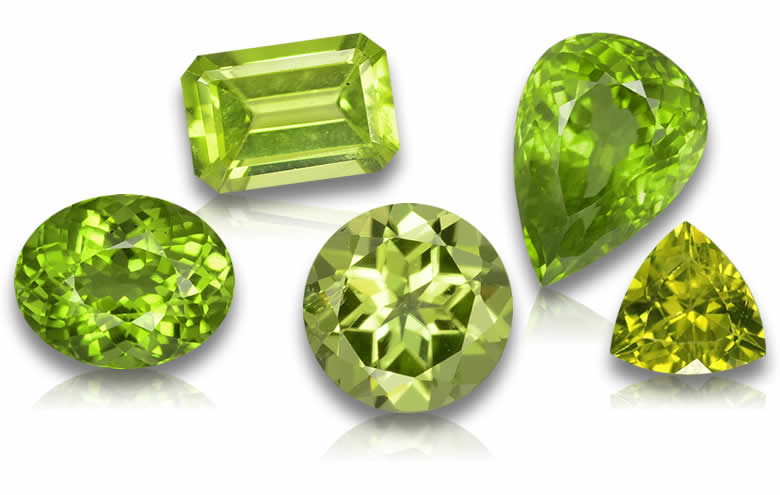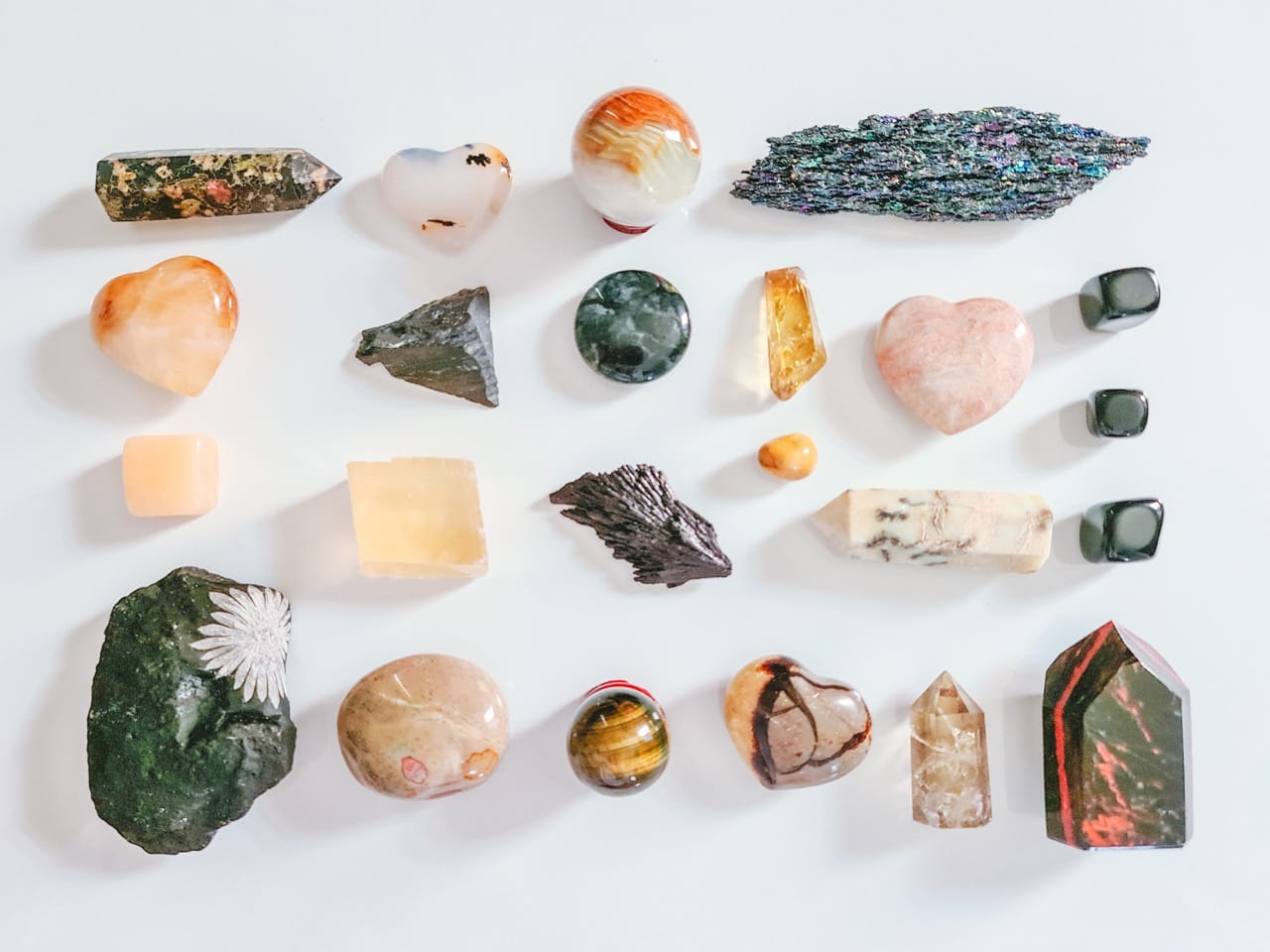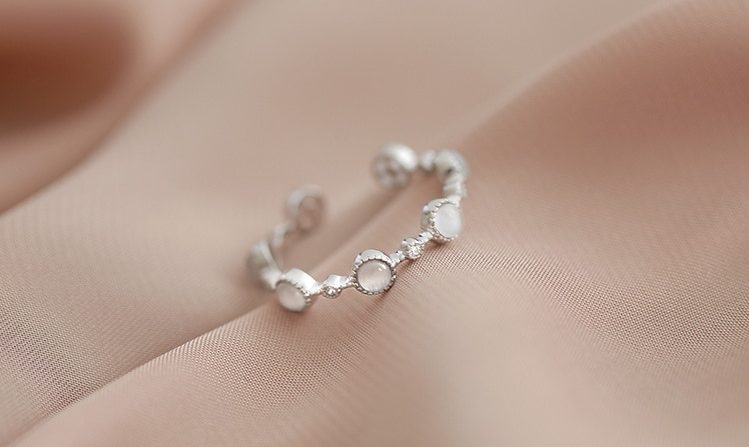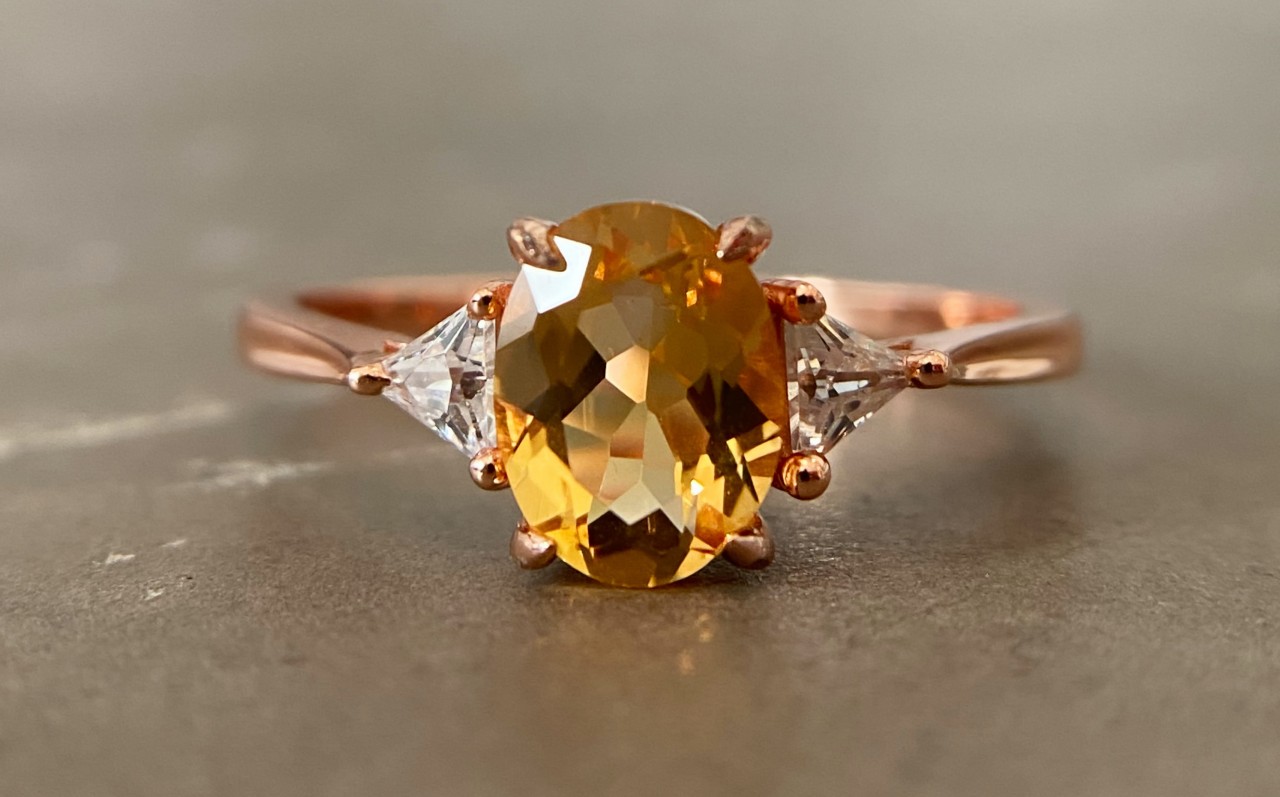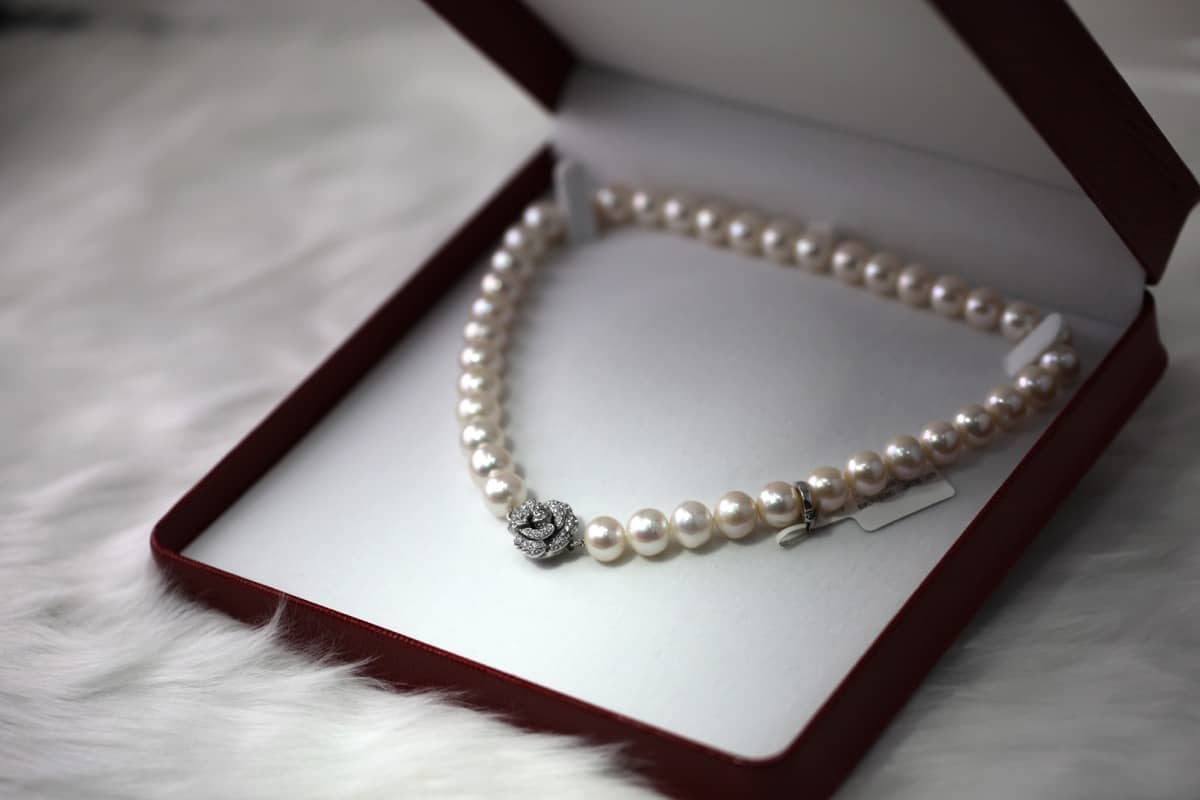Quick info about Peridot Birthstone
- Official birthstone: August
- Colors: Olive green to lime green
- Meaning: Protection, healing, and harmony
- Zodiac signs: Leo and Virgo
- Mohs hardness: 6.5 to 7
Birthstones have long held a special place in human history, with their origins traced back to ancient civilizations. These gemstones are associated with specific months of the year and are believed to bring luck, protection, and various other qualities to those born within their corresponding months. The concept of birthstones has evolved over time, influenced by different cultures and traditions.
Today, birthstones are not only cherished for their aesthetic beauty but also appreciated for the personal connection they hold for individuals. The tradition of assigning birthstones to months can be traced back to biblical times.
In Exodus 28:17-20, the Breastplate of Aaron is described as adorned with twelve precious stones representing the twelve tribes of Israel. Over time, these twelve gemstones became linked with each month of the year.
Each birthstone carries its own unique symbolism and meaning, making them highly sought after for personalized jewelry or gifts. They serve as a tangible representation of one’s identity and can be passed down through generations as heirlooms that connect family members across time.
Introduce Peridot as the birthstone for August
Among these captivating gems, Peridot reigns supreme as the birthstone for August. This vibrant green stone captures the essence of summer’s lush landscapes and radiant foliage. With its distinctive hue ranging from yellow-green to olive-green tones, Peridot possesses an unmistakable beauty that sets it apart from other gemstones.
Peridot derives its name from the French word “peritot,” meaning gold because it often showcases golden undertones within its green complexion. The mesmerizing color is attributed to trace amounts of iron present in its composition—particularly intriguing considering that most gem-quality minerals owe their colors to impurities rather than pure mineral substances.
Often referred to as “the Evening Emerald,” Peridot exhibits a captivating glow that intensifies under artificial light, resembling the radiant allure of emeralds. In fact, Peridot and emerald share similar chemical properties as they both belong to the silicate mineral group.
This affinity has resulted in historical confusion and even led to speculation that Cleopatra’s famed emeralds were, in fact, Peridots. As we delve deeper into the world of Peridot—the August birthstone—prepare to be enamored by its fascinating history, geological formation, physical properties, and cultural significance across various civilizations.
Historical Background
Ancient origins of Peridot
Peridot, a captivating gemstone known for its vibrant green hue, has ancient origins that can be traced back to the mysterious sands of Egypt. The first recorded discovery of Peridot dates back over four thousand years ago on the volcanic island of Zabargad in the Red Sea.
Known as Topazios in ancient times, this isle was famed for its abundant deposits of Peridot. The Egyptians held the gemstone in high esteem and believed it to be a gift from the sun god Ra, as it often appeared in areas where his divine light touched upon the Earth’s surface.
Mention its discovery in ancient Egypt and its association with Cleopatra
Ancient Egypt, a civilization renowned for its love of precious gemstones, valued Peridot immensely. Historians suggest that Cleopatra herself was particularly fond of this radiant green stone.
Legend has it that Cleopatra’s famous emerald collection may have actually comprised Peridots rather than true emeralds. This confusion stems from the similarities between certain shades of Peridot and emerald greens under different lighting conditions.
Discuss the belief that Cleopatra’s famous emeralds were actually Peridots
The belief that Cleopatra owned an extensive collection of Peridots instead of emeralds gains credibility when we consider historical evidence. During those times, Upper Egypt was known to be a significant source for both gemstones; however, Egyptian geologists had not yet differentiated between them accurately due to limited knowledge about mineralogy.
Considering this lack of distinction and Cleopatra’s fascination with Peridots’ exquisite charm and vivid coloration, it is plausible that her jewelers unknowingly adorned her crown and attire with these enchanting stones.
Cultural significance in different civilizations
Peridot’s allure extends beyond ancient Egypt, captivating various civilizations throughout history. In ancient Greece and Rome, Peridot gemstones were favored for their associations with nature and growth.
They were intricately incorporated into jewelry designs, often symbolizing vitality and prosperity. The vibrant green hue of Peridot was believed to be a reflection of the lush landscapes and abundant crops that these societies held dear.
Explore its use in ancient Greek and Roman jewelry
In both ancient Greek and Roman cultures, Peridots adorned the attire of the wealthy elite. They were popularly set in gold rings, necklaces, and bracelets as magnificent statement pieces or smaller accents within intricate designs.
These stunning gemstones not only added a touch of opulence but also symbolized divine connections with nature. Romans believed that wearing Peridot could bring good fortune, safeguard against nightmares, ward off evil spirits, and enhance marital happiness.
Highlight its presence in Hawaiian folklore as “Pele’s tears”
Beyond Egypt and Europe, Peridot also holds immense cultural significance in Hawaiian folklore as the legendary “Pele’s tears.” Pele, the goddess of fire in Hawaiian mythology, was said to shed tears when she was forced to flee her home volcanoes on the Big Island of Hawaii.
These droplets solidified upon contact with Earth’s atmosphere and transformed into small green stones – Peridots – which are believed to carry Pele’s powerful essence within them. Today, Hawaiians cherish these gemstones as a connection to their rich heritage and regard them as precious symbols of protection from harm.
Peridot’s historical journey through various civilizations reveals its enduring allure across time and cultures. From its origins in ancient Egypt to Cleopatra’s legendary collection to its symbolic meaning in Greek mythology and Hawaiian folklore – this radiant gemstone has captured hearts worldwide for centuries.
Geological Formation and Composition
Explaining the Formation Process of Peridot Gemstones
Peridot, a captivating gemstone with a distinct green hue, is formed through a fascinating geological process. It is primarily associated with volcanic activity and lava flows.
When certain types of magma, known as basaltic magma, rise to the surface during volcanic eruptions, they carry olivine crystals along with them. These olivine crystals eventually undergo various processes that transform them into peridot gemstones.
Peridot’s Association with Volcanic Activity and Lava Flows
Peridot’s connection to volcanic activity can be attributed to its formation within basaltic lavas. As these lavas cool down and solidify, they trap pockets of molten rock called xenoliths within them.
These xenoliths contain olivine-rich crystals that slowly crystallize over time under intense heat and pressure. During volcanic eruptions, when the lava reaches the Earth’s surface, it rapidly cools down due to exposure to air or water.
This rapid cooling prevents complete crystallization of olivine minerals present in the lava flow. As a result, peridots are often found as small grains or nodules embedded in volcanic rocks such as basalts or pumice.
The Deep Formation of Peridot within Earth’s Mantle
To understand how peridots form deep within the Earth’s mantle, we delve into its geology. The mantle constitutes the layer beneath the Earth’s crust and extends approximately 2,900 kilometers below our feet.
Within this immense depth lies an environment where high pressures and temperatures prevail. Deep within the mantle, minerals like olivine exist in abundance due to their stability under these extreme conditions.
Olivine gradually forms from magnesium (Mg) and iron (Fe) silicates at temperatures above 1,200 degrees Celsius and pressures exceeding 40,000 times atmospheric pressure. As molten rock rises towards the surface through volcanic conduits, it carries fragments of olivine crystals that eventually become peridot gemstones.
Peridot’s Chemical Composition: A Variety of Olivine Mineral
Peridot is essentially a variety of the mineral olivine. Olivine belongs to a group of minerals called nesosilicates and has the chemical formula (Mg, Fe)2SiO4. The presence of iron within its crystal structure gives peridot its characteristic green color.
The exact composition varies depending on the amount of iron present, which can range from a few percent to as high as twenty percent. The iron content influences the intensity and shade of green displayed by peridots.
Higher iron concentrations result in deeper olive-green shades while lower levels produce lighter yellowish or lime-green hues. Interestingly, some rare peridots exhibit brownish or reddish tones due to trace elements or impurities within their crystal lattice.
By understanding the geological formation process and chemical composition of Peridot gemstones, we gain a deeper appreciation for their allure and natural beauty. These remarkable gems are truly a product of Earth’s fiery depths and hold both historical significance and inherent charm for those born in August.
Physical Properties and Characteristics
Color Variations within Peridot Gemstones
Peridot gemstones exhibit a captivating range of colors, primarily falling within the spectrum of green hues. The most common shades of peridot range from a vibrant yellow-green to a rich olive-green. These colors are a result of the presence of iron in the gemstone’s composition.
The intensity and saturation of the green color can vary, with some peridots displaying a refreshing lime green tone, while others possess deeper, earthy green tones reminiscent of lush forests. Additionally, there are rare occurrences where peridot gems display hints of brownish or reddish hues, which add a unique touch to their overall appearance.
Gemstone Hardness on Mohs Scale (6-7)
Peridot possesses a moderate hardness on the Mohs scale, ranging between 6 and 7. While this places it higher than some other popular gemstones like opal or pearl, it is still relatively softer compared to stones like sapphire or diamond.
This means that although peridot can withstand normal wear and tear quite well, it is more prone to scratches when exposed to rough handling or contact with harder materials. As such, it is important to exercise caution when wearing and storing peridot jewelry to prevent unnecessary damage.
When compared to other gemstones commonly used in jewelry making, such as amethyst (hardness: 7), citrine (hardness: 7), or topaz (hardness: 8), peridot falls slightly lower on the hardness scale. However, this should not deter enthusiasts from adorning themselves with this magnificent gemstone; instead, it simply calls for gentle care and mindful maintenance practices.
Avoid exposing peridots to abrasive surfaces or harsh chemicals that may compromise their integrity. It is worth noting that even though peridots possess moderate hardness, their exceptional beauty and unique color variations make them highly sought after by gemstone connoisseurs and jewelry designers.
Their vibrant green tones, when combined with skilled craftsmanship, can create mesmerizing pieces that exude elegance and charm. Therefore, while peridot’s susceptibility to scratches should be considered, it should not detract from the allure of this remarkable gemstone.
The physical properties and characteristics of peridot make it a captivating gemstone. Its color variations ranging from yellow-green to olive-green offer a wide array of options for those seeking a touch of natural beauty.
Although relatively softer compared to some other gemstones on the Mohs scale, peridot’s moderate hardness (6-7) can be effectively managed with proper care. By understanding its vulnerabilities and taking necessary precautions to avoid scratches, one can fully appreciate the splendor that peridot brings when incorporated into jewelry designs or admired as loose gemstones.
Sources and Mining Locations
Identify major sources of Peridot worldwide
Peridot, the enchanting gemstone associated with August birthstone, can be found in various parts of the world. One of the significant sources is Arizona, USA. The San Carlos Apache Reservation in Arizona is renowned for producing high-quality Peridot gemstones.
The vibrant green gems extracted from this location display an exquisite color hue that embodies the essence of summer. China is another prominent source of Peridot.
The Hualing County in the Xinjiang region boasts sizeable deposits of this captivating gemstone. Chinese Peridots are prized for their exceptional clarity and intense green coloration, making them highly sought after by collectors and jewelry enthusiasts alike.
Myanmar (formerly known as Burma) also contributes to the global production of Peridot gemstones. Located in Mogok Valley, Myanmar’s mines yield beautiful gems exhibiting a rich green hue with subtle golden undertones.
These gems possess a unique charm due to their natural fluorescence, which gives them an appealing glow under ultraviolet light. Pakistan’s northern regions have become renowned for their substantial Peridot deposits.
The Khyber Pakhtunkhwa province stands out as one of the country’s primary mining areas for this gemstone. Pakistani Peridots are appreciated for their distinctive olive-green shades and exceptional clarity.
Egypt has a long history associated with Peridot mining dating back to ancient times. Although production has decreased over time, Egyptian mines still produce remarkable specimens with a characteristic golden-green tint reminiscent of Cleopatra’s legendary jewels.
Conclusion
Peridot, as August’s birthstone, holds immense beauty and significance throughout history and across cultures worldwide. This remarkable gemstone captivates admirers with its vibrant green hues that evoke feelings of vitality and renewal. From ancient Egypt to modern-day mining locations like Arizona, China, Myanmar, Pakistan, and Egypt, Peridot continues to enchant with its unique charm.
Its presence in jewelry and folklore adds to its allure, making it a gemstone that truly embodies the essence of August. So whether you are an August-born individual seeking a meaningful birthstone or simply captivated by the splendor of Peridot, this gem is sure to leave you feeling inspired and uplifted by its natural beauty.

